On 18 February 1930, the American astronomer Clyde William Tombaugh, who was searching for the elusive planet X, discovered the shift of a tiny star on one of the photographic plates. That day, he discovered Pluto, the ninth planet of the Solar System, as it was then believed.
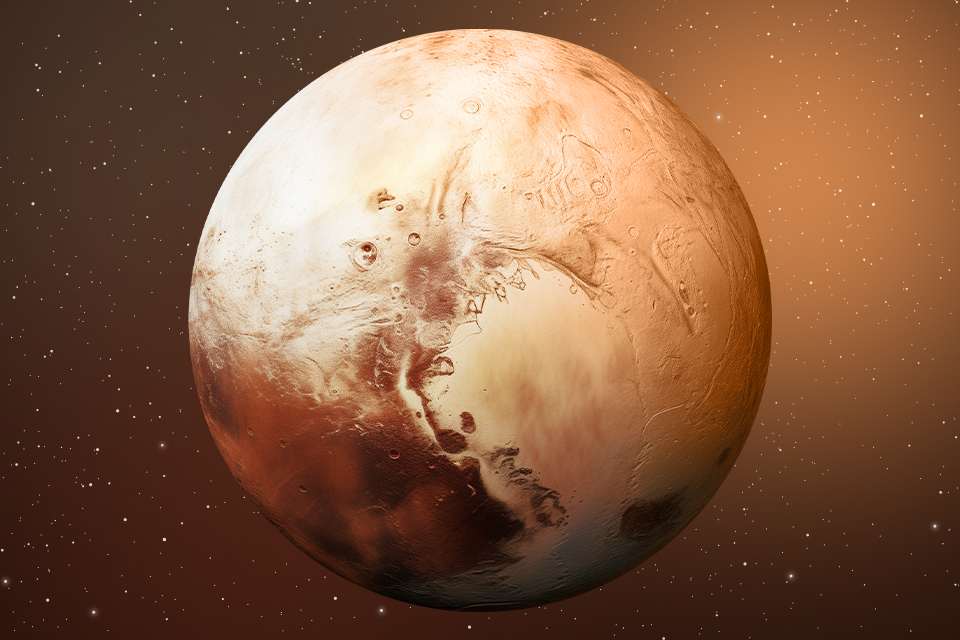
In honour of the anniversary of Pluto’s discovery, we would like to share five interesting facts about this very unusual world. How big is Pluto? How far is it to fly to it? And, most importantly, why is Pluto no longer considered a planet?
Where does the name Pluto come from?
After the discovery became known, various scientists proposed a number of names for the new celestial body. Among them are Zeus, Minerva, Cronus, and Percival — in honour of Percival Lowell, the main sponsor of the search for Planet X and the founder of the Lowell Observatory, where Clyde Tombaugh worked. Interestingly, Lowell’s widow, who was suing the observatory over his will, suggested that astronomers name the new planet after her.

But in the end, the name suggested by 11-year-old Venetia Bernie was chosen. When her grandfather asked her what she would name the new planet, the girl replied that since it was so distant and cold, it should be called Pluto, in honour of the Roman god of the underworld. The grandfather liked this option so much that he told an astronomy professor he knew about it, who, in turn, passed it on to the Lowell Observatory staff. During the subsequent vote on the planet’s name, they unanimously chose Pluto. This name was not only in line with the ancient tradition of naming planets after gods, but also paid a tribute to Percival Lowell, as its first two letters corresponded to the initials P.L.
It turned out to be a very good choice, and the name Pluto quickly became a cultural favourite. It is believed to have inspired Walt Disney to choose the name for Mickey Mouse’s faithful companion, Pluto the dog.
How long to fly to Pluto
Unlike the planets of the Solar System, Pluto is in a very elongated orbit with a much greater eccentricity and inclination to the ecliptic plane. At aphelion, it is 7.3 billion km away from the Sun, and at perihelion, it is 4.4 billion km to it. Because of this, the flight time to Pluto can vary greatly. But in any case, it is a rather long journey.
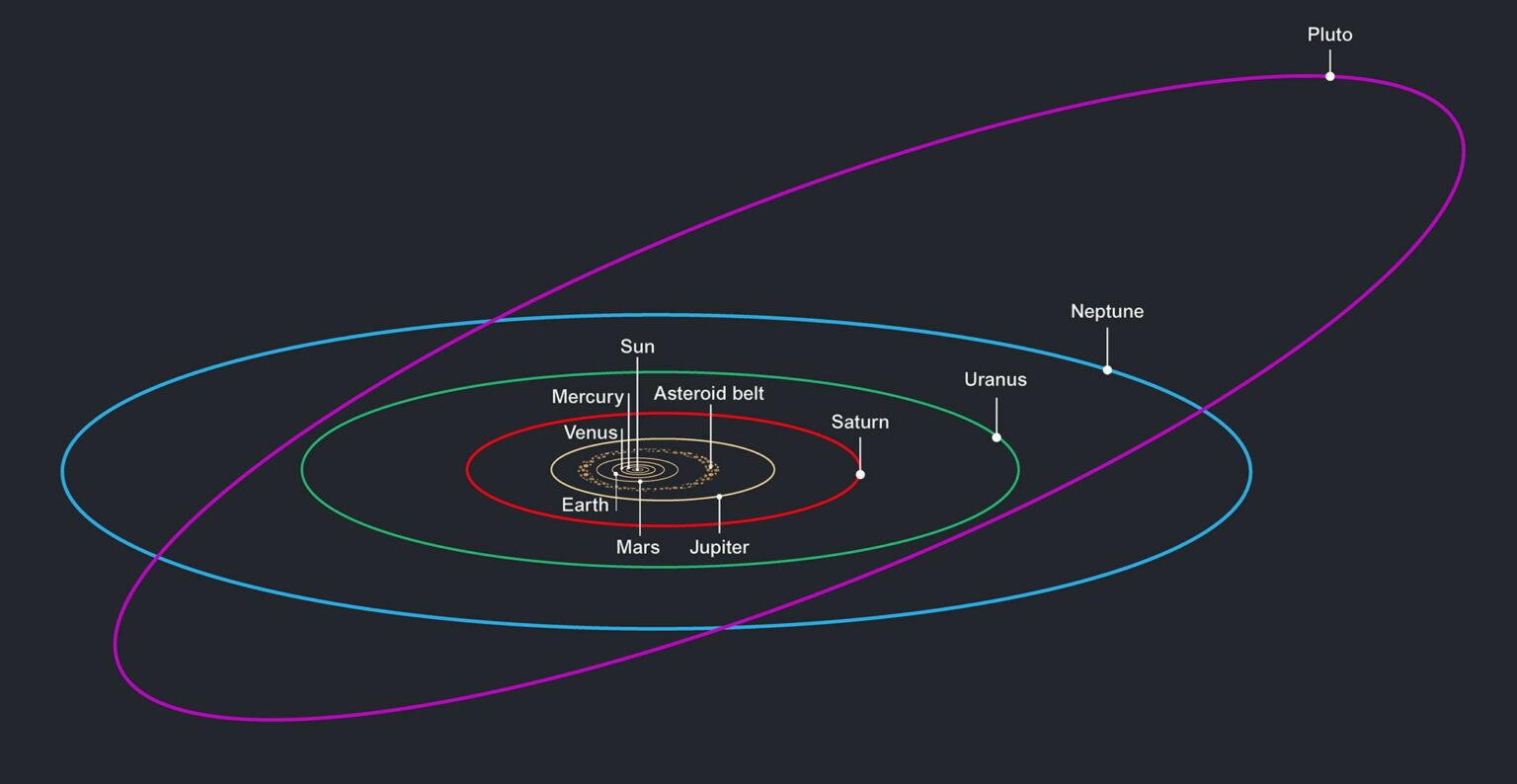
To date, only one Earth messenger has visited Pluto. This was done by the New Horizons spacecraft in 2015. To reduce the flight time, it used Jupiter’s gravity to accelerate its journey. In total, it took New Horizons 9.5 years to reach Pluto.
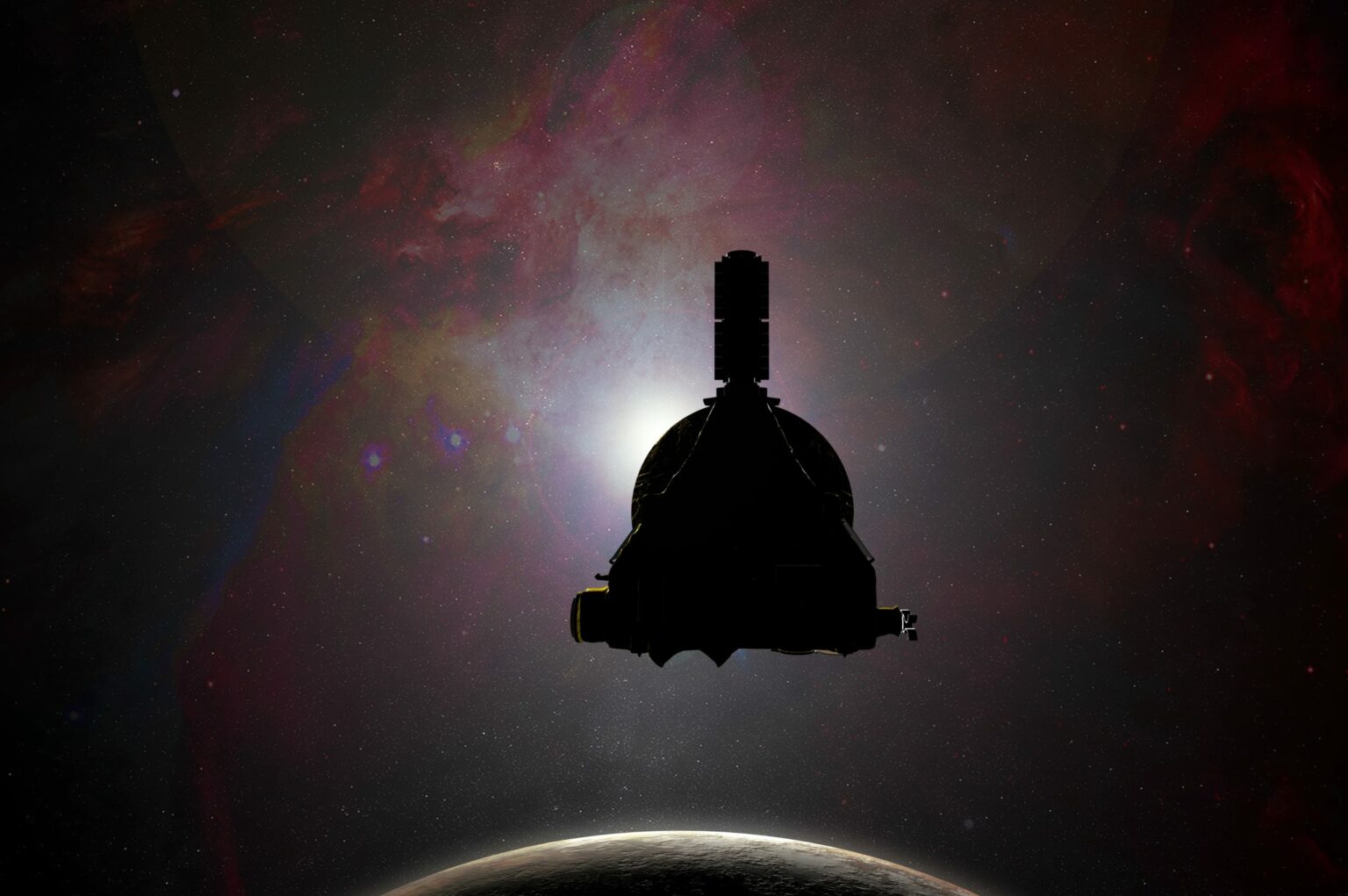
But you have to understand that New Horizons was a flyby mission that did not have the ability to enter orbit around Pluto. And this is a much more difficult task. According to experts, to solve it, it is necessary to use a combination of an ultra-heavy launch vehicle, a series of gravity manoeuvres, and a nuclear electric stage. Even with this in mind, the total flight time of the mission, which aims to enter orbit around Pluto, will be about thirty years.
Which is bigger — Pluto or the Moon?
When Pluto was first discovered, it was thought to be comparable in size to the Earth. But as telescopes improved, it became clear that this was not the case. The exact dimensions of Pluto were determined thanks to New Horizons. It turned out that Pluto’s diameter is 2380 km.
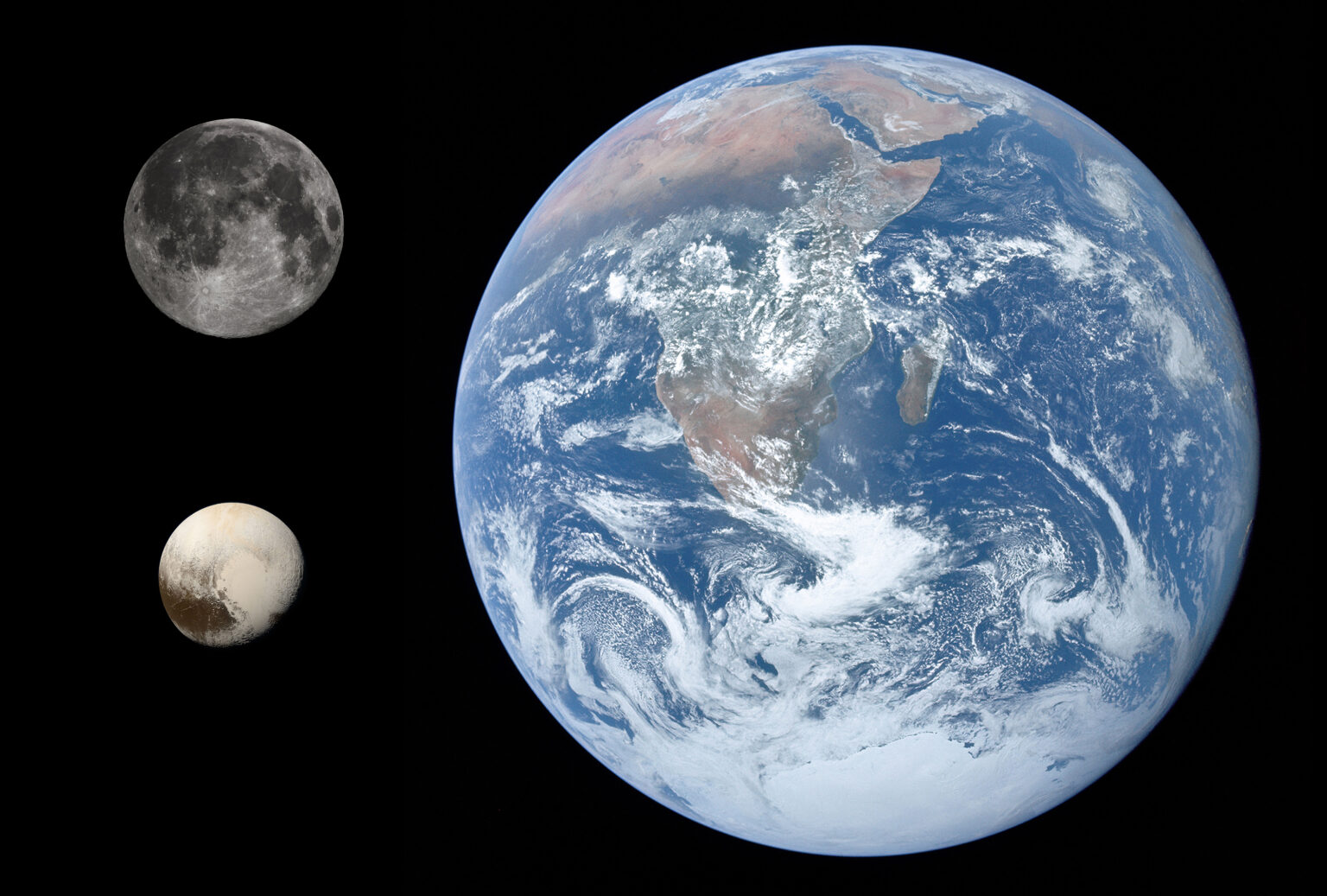
Is it a lot or a little? For comparison, the diameter of the Earth is 12740 km, and the diameter of the Moon is 3480 km. So Pluto is even smaller than the Moon. Its surface area is 17.7 million km. This is comparable to the size of South America.
At the same time, Pluto is still the largest body in its region. All known Kuiper belt objects, including Eris, are smaller than Pluto.
Why Pluto is no longer a planet
The decision to remove Pluto from the list of planets was made at the infamous session of the International Astronomical Union (IAU) in August 2006. It had a number of prerequisites. In the early noughties, astronomers found several trans-Neptunian objects comparable to Pluto in size and mass (initially, Eris was thought to be larger than Pluto). This posed a dilemma for the scientific community — either to recognise all these bodies as planets or to postulate a new category and reclassify Pluto. In the end, the simpler second option was chosen, and Pluto was called a dwarf planet.
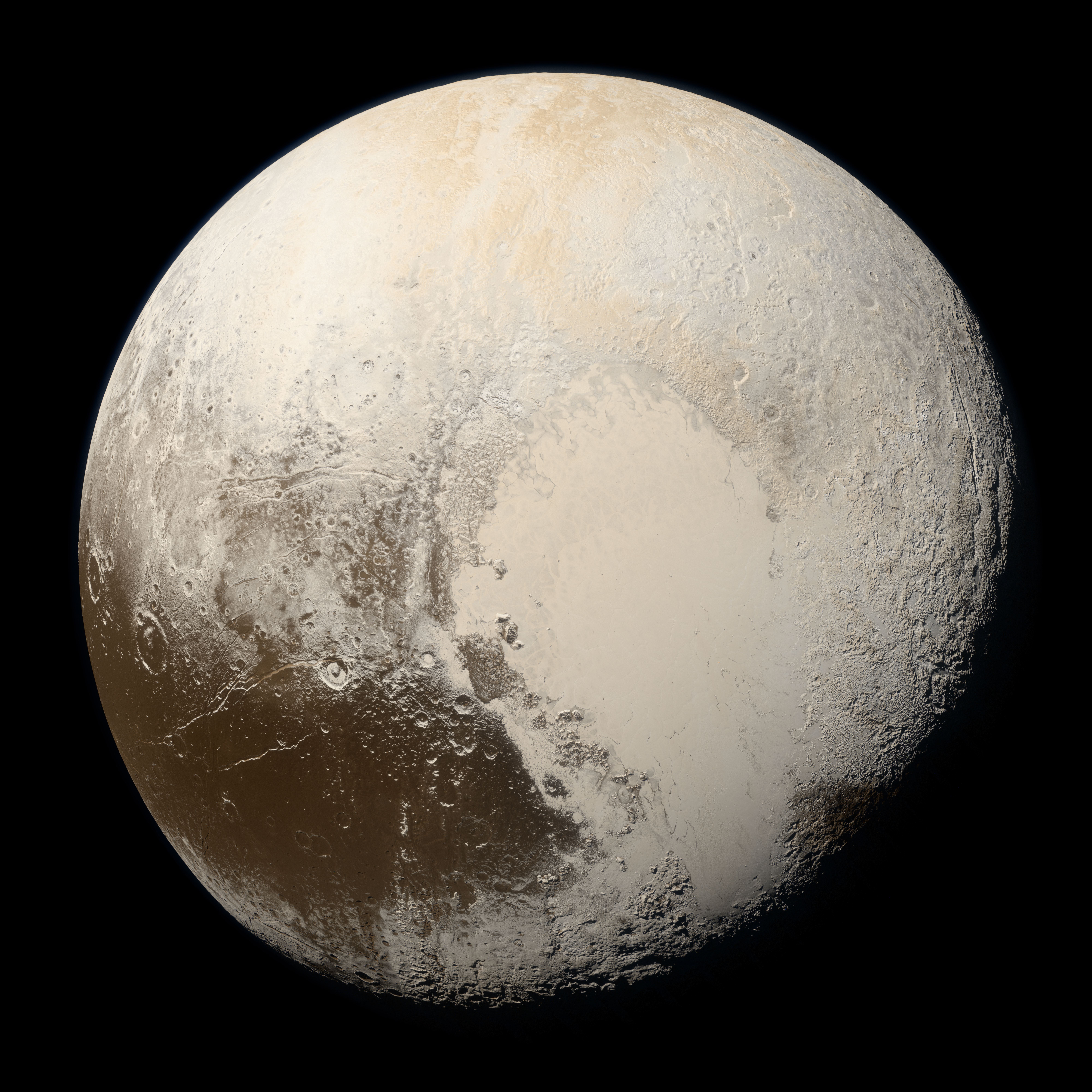
To be fair, the IAU’s decision was influenced not only by scientific but also by personal motives. It is alleged that an important role in this was played by British astronomer Brian Marsden, who for some reason disliked Clyde Tombaugh and set out to “destroy” his scientific legacy by removing Pluto from the list of planets.
In any case, not all members of the scientific community were delighted with the new classification. Some astronomers still hope to have the IAU’s decision revised in the future.
What colour is the sky on Pluto?
Although Pluto is small in size, it has its own atmosphere. It consists of gases that evaporate from the ice that covers the dwarf planet (mainly nitrogen and methane). Despite its extreme rarefaction, Pluto has winds that have a significant impact on surface processes.

In addition, under the influence of sunlight, complex compounds are formed in Pluto’s atmosphere, which form several layers of hydrocarbon haze. They have a blue colour, which is clearly visible in one of the most iconic New Horizons images. The image was taken when the Sun was behind Pluto, illuminating its atmosphere. So, like our Earth, the former ninth planet has a blue sky.

